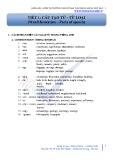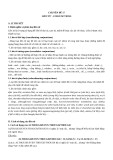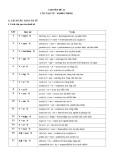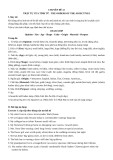
7+(:25)2507,212)6/17(50621
(1/,6+19,(710(6(62&,/0(,,1
7DQ7KL7K3KRQ
1HQDLRQ
Email:phuongttt@yersin.edu.vn
Received:05/08/2024
Revised:17/02/2025
Accepted:26/02/2025
DOI:10.59266/houjs.2025.532
EVWDFWKHVWGGHHGLQWRWKHRPDWLRQRVDQWHPVRQ(QLVKDQG9LHWQDPHVH
social media in 2023, utilizing a theoretical framework that combines the works of Yule
(2010),Meyer(2009),Schmid(2015),andLe(2023).Employingaquantitativemethodto
analyze thedata,the researchersdiscoveredseveralinstancesof variouswordformation
processesinbothlanguages.InEnglish,thisstudyfound14casesofmeaningextension,5of
acronyms,5ofcoinage,4ofclipping,3ofcompounding,1ofconversion,and1ofsyllable
change.Meanwhile,Vietnamesehad13casesofmeaningextension,8ofborrowing,8of
syllablechange,7ofcompounding,6ofmultipleprocesses,and2ofcoinage.Ultimately,this
researchaimstocontributetotheeldoflinguisticsbyexpandingourknowledgeofword
RPDWLRQSRHVVHV
.HRV:RGRPDWLRQDQWHPV9LHWQDPHVHVRLDPHGLD(QLVKVRLD
YersinUniversityofDaLat
,,QWURGFWLRQ
Word-formation research aims
to uncover, categorize, and model the
PFKDQLVPV KDQUOL KSURFLRQ
R Q DQ LVLQJ FRPSO OPV
(Schmid,2015).However,thevarietyof
waysthatawordformsisstilldebatable.
For example, Bauer (1983, p. 1), stated
that “There is, at the moment, so single
‘theory of word-formation’, nor even
DJUPQ RQ K NLQ R DD KD LV
relevant for the construction of such a
theory.”Asimilarideawasconveyedina
recentstudybySchmid(2015),whichsaid
KDKULVDJUDDORLVDJUPQ
overthespecicsofhowword-formation
processes shouldbemodeled.Therefore,
RKU UVDUFK UJDULQJ RU RUPDLRQ
isneverabundant.
QRKU DFRU LV K FKDUDFULVLF
of the vocabulary and the roleof social
media in replenishing it. According to
Arnold (1973), the lexical system is
adaptable,andvocabularychangestomeet
the ever-evolving demands of culture,
human communication, and otherneeds.
Rapidtechnologicaladvancementhasled
totheexpansionofthissystem,associal
media are believed to have contributed
R FUDLQJ VRP Q RUV KLFK DU
related to word formation types, which
isstatedbyFaradisaetal.(2019).Hence,
L LV VVQLDO R UVDUFK K RUPDLRQ
of slang terms coined on social media.






























